Gwyneth Paltrow Invests in Natural Frozen Food, Elicits Eye Rolls


-
- Daily Harvest promises weekly deliveries of wholesome, frozen meals
Fresh off her adventure with “healing stickers,” Gwyneth Paltrow has recently announced her investment in the frozen meal delivery service, Daily Harvest. No, this is not some pallid frozen green bean venture - we can safely assume she had a “conscious uncoupling” from such an ingredient years ago.
Founded by a “busy” New Yorker (why is that term New Yorkers’ favorite word to describe themselves?), the company has “tapped into a new kind of frozen technology” that enables it to deliver breakfast bowls and smoothies saving foodies “time, stress and money.” Tennis star Serena Williams is also apparently investing in Daily Harvest, adding to the meal service’s “A-List” street cred.
“Gwyneth Paltrow is an authority on health and wellness,” the company’s founder and CEO, Rachel Drori, told Fortune magazine. Drori apparently overlooked Paltrow’s past health advice, which includes the assertion that underwire bras could cause cancer, the [unproven] benefits of detoxing, and her preference for smoking crack over “eat[ing] cheese from a tin.”
In an “exclusive” statement to People magazine, Paltrow revealed that “most people don’t have access to farm fresh produce year-round.”
On that point, Paltrow is correct, which is why many Americans have a supply of frozen produce on hand, as in her words, “farm-frozen produce is picked at its nutritional peak, retains more nutrients and it's more readily available to everyone.”
When it comes to saving money, Daily Harvest’s pledge of frugality must be left in the eye of the beholder. The frozen meals, intended for breakfast, start at $6.49; in fairness, the more you buy, the more you save. For example, if a family of four wanted to subsist on a weekly diet of these various smoothies (which generally cost $6.99 each), a weekly supply of 24 of these frozen cups would cost $167.76, or $6.99 a breakfast. That weekly subscription fee is several dollars higher than what the U.S. Department of Agriculture (USDA) describes as the weekly cost of a “low-cost” weekly grocery bill for a family of four.
TriplePundit’s staff went through their freezers and receipts and compared the cost of making a quick, healthful breakfast at home. A family who had the means to afford Whole Foods on a regular basis could prepare a breakfast that included one slice of whole wheat bread with vegan spread; one hard-boiled free-range egg; a cup of fair trade coffee with coconut milk-based creamer; one ounce of almonds; and two ounces of fresh or frozen blueberries. That meal cost on average $2.30, or one-third the cost of Daily Harvest’s smoothies.
The company’s announcement of this new partnership on Facebook elicited many comments, from the verbal eye-roll to absolutely incredulous.
“Awesome - does that mean they will help make this organic, fresh food available at lower prices so it's not a luxury item?”“Definitely interested in your product. I've filled out an order but decided to wait a bit. Not impressed that Gwyneth Paltrow is getting involved at all! Hope it doesn't change the quality of your product and vision.”
“Wouldn't it be awesome if that meant fresh, organic food was more available to all budgets”
“Are we talking "Whole Foods" freezers or the freezers of communities with food deserts (where often the only point for shopping is bodegas)? If the former, it seems like a mere gesture to me.”
“Nothing like Gwyneth Paltrow to turn everyone off your product! I'm sure she'll make a really pretentious video about herself to sell it too! Joy.”
“The convenience of take away single use materials is trashing our planet.”
On that final comment, the company replied that while the cups are “mostly recyclable,” the lids definitely can be placed in the blue bin. Daily Harvest also assured customers that the cups are also “vegan, dairy-free, gluten-free, and soy-free.”
Criticism aside, the company is charging ahead with its product line of overnight oats, chia puddings and smoothies, promising to transform eating habits nationwide. “Daily Harvest is a business born from personal need. Drori felt the way she aspired to eat and the way she had time to eat were always in conflict. This problem, and Drori's solution to it, rang true with Paltrow and Williams, as it has with tens of thousands of Americans,” said a press statement announcing the latest Series A financing round.
Image credit: Daily Harvest
It’s Time for the World to Start Caring About Coconuts


By Angie Crone
Welcome to the age of the coconut, one of the world’s most popular “superfoods.” If you couldn’t already tell, coconut products are everywhere. And demand is still rising. Coconut water, the first to hit the market, was quickly followed by a boom in sugars, oils, flours, body care, detergents and even home cleaning products. (Most of us use coconut on a daily basis and don’t even know it!) Coconut water alone is projected to generate $4 billion in revenue between 2015 and 2019. Meanwhile, the Food and Agriculture Organization of the United Nations reported that the global demand for coconut is growing at a rate of more than 10% each year.
So coconut is booming, but where’s it all coming from? And an even bigger question- can the people growing it keep up with the craze?
Most of the world’s coconuts are grown in three countries: Indonesia, the Philippines, and India. While Indonesia is the largest producer, the Philippines is actually the largest exporter of coconuts to the global market (at 59 percent). Currently around 95 percent of coconut trees are harvested by smallholder farmers. In the Philippines alone, there are 3.5 million smallholder coconut farmers, meaning “the livelihoods of one in every five Filipinos are directly or indirectly dependent on the coconut sector,” said Romulo Arancon, executive director of the Asian and Pacific Coconut Community. Unfortunately, many of these farmers are in trouble. Our growing love of coconut isn’t necessarily benefitting the communities where they are grown.
The Challenges:
These are some of the key issues in the coconut sector right now. And very few coconut lovers recognize how important it is to address them:
Demand is outpacing supply
Regional Asia Pacific production of coconut is only growing at a rate of about 1.3 percent per year (which is troubling with a 10 percent demand increase), largely due to declining productivity from aging trees. On average, a coconut tree’s lifespan is up to 100 years, but peak production happens between ages 10 and 30. As a tree ages, it produces fewer and fewer coconuts, leaving farmers to decide whether to remove the tree and replant or to continue relying on dwindling yields. It takes upwards of five years for a tree to start producing coconuts, which is a long time to wait to put food on the table.
Farmers are deeply impoverished
The National Anti-Poverty Commission found that despite the increased demand for coconut, around 60 percent of coconut farmers live below the poverty line. Farmers have little-to-no extra income to invest in resources for their farms, which results in shrinking crops and further declining incomes. The average annual income for a coconut-farming household is around $355 a year, which averages out to less than one dollar a day.
And so, the cycle continues. Low incomes, declining production, deeper poverty. The worst part? Younger generations are watching this cycle firsthand, and are looking for the exit. People just don’t want to grow up to be coconut farmers; it’s simply not a viable profession.
Climate change
The Philippines are hit by an average of 20 typhoons per year. In 2013, Typhoon Yolanda damaged 33 million trees, impacting more than one million farmers across the country and causing $369 million in losses. Pests also pose a major threat to coconut yields and can impact trees virtually overnight- an issue that heightens with irregular and warming weather patterns. So, what do we do?
- Learn about the issues and raise awareness
There is not one single solution for how to transform the coconut industry, but without a doubt, it has to start with awareness and a conversation. The coconut economy is vast, but the number of collaborative efforts to transition the world’s coconut supply into sustainable production can be counted on one hand. We see so many large-scale efforts to support industries like cocoa, coffee, seafood and other sectors, but not yet in coconut. Our favorite “tree of life” is being left behind. It’s time to change that.
In addition to fostering cross-industry dialogue, Fair Trade USA is working to build sustainable livelihoods in coconut communities through certification. Since launching in 2014, Fair Trade USA’s coconut program has grown to include over 6,000 farmers, primarily in the Philippines. With the help of the program, farmers work together to address these critical challenges and to take the lead in building stronger businesses and communities. The Fair Trade coconut program is still small, but can play an important role in a much larger, industry-wide solution as it continues to expand over the coming years.
The two most important things to know about Fair Trade coconuts are: the Fair Trade Standards, which help protect farmers and the land they rely on, and the Community Development Fund, an additional amount of money farmers earn every time you purchase a coconut product with the Fair Trade Certified seal. Farmers decide democratically how best to use this money, to strengthen their farms, livelihoods, and communities.
In the Philippines, Fair Trade coconut farmers are voting to use this money to directly combat the largest threats to their wellbeing, including:
- Tree replanting and nursery creation, to ensure old trees can be replaced
- Disaster relief programs, to help farmers cope with and recover from climate change-related natural disasters
- Crop diversification, so they have more resilient farms and other sources of income to support their families
One group of farmers in the Philippines also used Fair Trade funds to create a school lunch program for malnourished children. “With the help of the feeding program, children are now motivated to go to school,” says Abby Cordero, a teacher at the school. “They learn proper personal hygiene and their school performance improved. Since the parents of these malnourished children are also involved they learn to cook nutritious and affordable meals for their families at home.”
For more examples of the impact of Fair Trade, watch this video made by coconut farmers in the Philippines.
Angie Crone is Coconut Manager for Fair Trade USA
HSBC's investigation into own client saves Indonesian rainforest
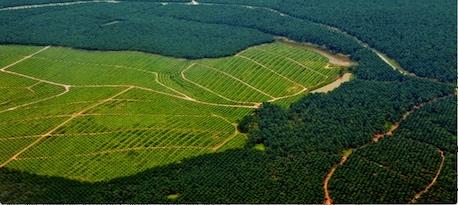
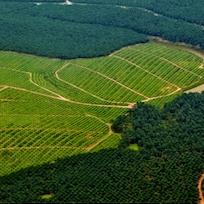
Trust in an era of 'alternative' facts
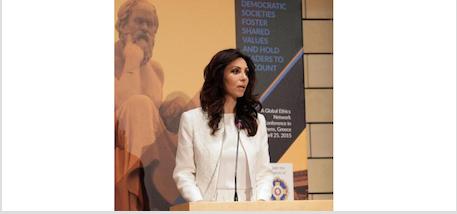
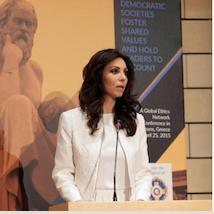
Brazilian Agribusiness Eyes Palm Oil: Is the Amazon in Further Danger?


According to a recent report on the Guardian, powerful agriculture interests in Brazil are eyeing the global palm oil industry. Currently, Indonesia and Malaysia combined dominate the sector, with a foothold on as much as 85 percent share of worldwise market share. Nevertheless, Brazil certainly has the land, labor and capacity to make inroads on this lucrative – but to critics, destructive – industry. And forces such as Embrapa, the Brazilian government’s agricultural research agency, believe that Brazil’s farming sector can scale production and export palm oil along with other commodities such as coffee, sugar, soy and beef.
At first, Brazil’s ambition comes across as jarring, considering the country’s recent deforestation trends and human rights record. After a generation of progress on fighting poverty, halting the pace of forest clear-cutting and improving labor conditions, many analysts say political turmoil in Brazil has resulted in a reversal in those improvements. After last year’s impeachment of President Dilma Rousseff over corruption allegations, her successor, Michel Temer – himself embroiled in an ethics scandal – has nullified forest protections across regions including the Amazon.
As reporters Tom Levitt and Heriberto Araujo point out, Brazil’s foray into the palm oil industry dates back to 2010. Brazil’s former president Luiz Inácio Lula da Silva viewed palm oil as a way to boost both exports and farmers’ income. For now, most palm oil production in the country is relegated to the north-central state of Pará, where the Amazonian climate is ideal for this crop’s cultivation. But Embrapa eyes additional lands for palm oil, including the state of Amazonas, west of Para, and much of the country’s savannah-like cerrado.
The specter of Brazil ramping up palm oil production raises the hackles of some environmental organizations, which fear that Brazil’s current political chaos could open the door to more virgin forests being converted to monoculture palm oil plantations. But Abrapalma, Brazil’s leading palm oil trade association, says that the cultivation, production and export of palm oil could increase without having a destructive effect on Brazil’s ecosystems.
A representative of Brazil's palm oil industry, who requested to not be identified, defended the sector's business practices in an email exchange with TriplePundit. "It appears that the Guardian piece might have given a simplified version of what's happening on the ground there," said the spokesperson.
And some non-profits agree with that outlook, although in general they are guarded when they discuss Brazil’s potential to become a global palm oil leader. “The Brazilian palm oil industry has thus far shown the capacity to develop without deforestation, and in a way that enhances carbon management and biodiversity,” said a spokesperson with the NGO Mighty Earth during an email exchange with 3p.
Mighty has been quick to denounce the global palm oil industry’s ties to environmental degradation, but the group shares a more nuanced view of future palm oil production in Brazil. The organization says Agropalma has developed a solid track record for its reputable conservation measures. In addition, the trade group has also promoted palm oil as a path for family-run farms to build wealth. And as is the case with some beef production, there is plenty of land that could be devoted to this crop without further deforestation. “Brazil has more than enough previously deforested land to support the sustainable development of palm oil, without the need to put more pressure on forests,” explained Mighty’s spokesperson.
Furthermore, Mighty believes that if both industry and government conservation measures in Brazil endure – and recent developments in Brazil make that a big “if” - any growth of the palm oil industry in Brazil could reduce pressure on forests in frontier areas worldwide, including Peru, Colombia, Africa and Indonesia – regions where various NGOs say the sector has been unsuccessful in scaling up production without deforestation.
The palm oil industry should take notes from the history of soy production in Brazil.
Earlier this century, when soy production consumed Amazonian forests at a ravenous pace, Brazil’s private sector and NGOs worked together to put a dramatic halt to the destruction, resulting in what Mighty describes as one of the greatest climate action success stories of the past decade. According to Greenpeace, the resulting Soy Moratorium showed that stopping deforestation could be good for both the environment and business. In the event palm oil production actually increases in Brazil, the lessons learned from Brazil’s soy industry could be instructive.
Greenpeace and Mighty have noted that collaboration to halt deforestation linked to farming across the Amazon collapsed to almost zero, while Brazil’s soy production nearly doubled, proving that profitability and environmental protection are not mutually exclusive. From Mighty’s point of view, the Soy Moratorium provides a template that the palm oil sector could easily replicate. “Several of the main agribusiness traders that agreed to a moratorium on deforestation for soy in the Amazon - Cargill, Bunge, Archer Daniels Midland, Louis Dreyfus—all have commitments, which are global in scope, to ‘No Deforestation’ for palm oil as well,” said Mighty’s spokesperson.
As the Soy Moratorium offers a reliable and proven model for success, Mighty believes these companies could easily expand this framework to include palm oil and other commodities. Such protections could also ensure protections are drawn up to include the cerrado, Bolivia’s Amazon, and additional threatened forests and native ecosystems throughout Latin America.
But as the Guardian and other news sources infer, Brazil’s legal system needs to function to ensure that all stakeholders benefit and receive protection. Activists insist land grabbing in Brazil is becoming worse, not better. And last year, the number of killings reportedly tied to land conflicts in Brazil reached its highest number since 2003. Brazil’s companies have shown that they are willing to abide by commitments that bolster environmental protections and human rights; the problem has often been dodgy tactics within these businesses’ supply chains. Considering the current political volatility and polarization in Brazil, a clear path for sustainable palm oil production in Brazil probably will not give way until after next year’s presidential election.
Image credit: CIFOR/Flickr
Target Tackles "Branded Trash" with New Recycling Initiatives


By Keefe Harrison
As the U.S. government pulls back from environmental advances, as evidenced by withdrawing from the Paris Agreement, corporations are moving forward together to achieve sustainability goals by funding local and national recycling improvements.
Wise companies are hip to the reality that packaging that cannot be easily recycled becomes branded trash. Large retailers are tuning into the concept of a circular economy, which calls for companies to ensure that what they manufacture can be reused, renewed, or recycled. Recycling efforts are being made - company by company - across the country, which is a win-win for American manufacturing and the environment.
They are also aware that sustainable brands are growing quickly because the public is interested in companies that engage in more than just earning a profit. According to a GlobeScan sustainability survey, 65 percent of the public wants to support companies that exhibit a strong purpose, but only 45 percent are able to name such a company. Reportedly, it’s the integration of a company’s sustainability values into their operations that people cite as the top reason a company is seen as an industry leader.
Target is such a company – it has created and is committed to meaningful sustainability goals.
According to these goals, by the year 2022, Target will: source its own brand paper-based packaging from sustainably managed forests, eliminate expanded polystyrene from its brand packaging, add the How2Recycle label to its packaging, and create more demand for recycled packaging. Additionally, Target has partnered with The Recycling Partnership to fund improved recycling operations and education in cities and towns across the country. To date, more than 30 companies are behind The Recycling Partnership’s work to improve recycling in more than 250 communities. Target is the organization’s first retail partner.
Good recycling is not just turning used materials into new, reusable materials; it is also about creating packaging from materials that can be recycled in the first place. Creating recyclable packaging is good for business and brand perception. Sustainable companies do not want to produce packaging that reminds the public that their company is contributing to the landfill and litter problem. Packaging can be a brand asset or a brand liability. On the flip side, sustainable packaging ensures that papers, cans, boxes and containers are called back into duty, which is well aligned with American values. When companies prioritize recycling, it enables them to become a part of the solution, rather than remain part of the problem.
Corporations like Target are intelligent. They know their customers want to be proud of the products they buy and proud of the companies from which they purchase.
Recycling is among the many environmental issues that the government, the public, and business are working on together. It’s easy to assume that recycling is everywhere. After all, 94 percent of the population says they want to recycle, but our recent research shows that only 47 percent of the U.S. population has recycling automatically provided at their home. Of those homes, only 44 percent are served by recycling carts, which is the most effective way of recycling. This is a huge miss for the environment because recycling is one of the most efficient ways to reduce climate change-creating greenhouse gas emissions.
Recycling also has enormous economic benefits that can be identified on a large scale, like preserving resources for future generations, and creating new U.S. jobs in the recycling and manufacturing industries. Target is focused on recycling and sustainable packaging because it wants to support local communities. Communities find strength and unity in their town- and city-wide recycling efforts. It’s good to see large corporations are working on the community level to take the place of government leadership and support.
Keefe Harrison is the CEO of The Recycling Partnership, a national nonprofit organization that is transforming recycling in towns all across America. A 19-year veteran of the waste reduction and recycling field, her experience includes firms, governments, and organizations such as Booz Allen, NC Dept. of Environment, Association of Plastics Recyclers, Southeast Recycling Development Council, and Resource Recycling Systems. She is an active national speaker and published author on recycling and environmental issues.
Housing crisis offers an opportunity to implement electricity demand management


Women-owned businesses supported by UN Women


GM Boosts STEM Education for Girls and Women
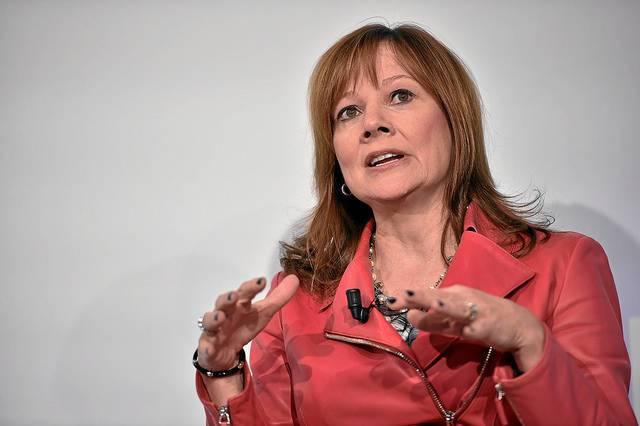

General Motors CEO Mary Barra has long been an advocate for girls enrolled in STEM (science, technology, engineering and mathematics) education. Now GM is cutting checks to help more females enter these professions.
Last week, the automaker announced that it will contribute at least $850,000 to four non-profits that work with young women and minorities to boost their STEM skills. Barra noted during a recent conference in New York City that in the U.S., only 18 percent of computer science majors and 10 percent of information security professionals are women.
“We’re in the midst of transforming how our customers get from point A to point B with technology like autonomous vehicles, connectivity, electrification and car sharing,” said Barra in a public statement. “By expanding and improving access to STEM education, we’re developing teachers’ and students’ capabilities.”
Earlier this year, Barra claimed that during 2016, GM filled a position related to STEM every 26 minutes. Yet along with many companies, GM struggles recruiting women, and the gender gap within technical fields remains difficult to close.
The organizations to receive funds from GM are Code.org, Black Girls Code, Institute of Play and Digital Promise.
For GM, such a commitment goes beyond checking the boxes for diversity and corporate responsibility. As is the case with many manufacturing companies, technology shifts behoove businesses to hire more software engineers and other information technology professionals. GM is hardly immune from this trend, as projected changes in car ownership and the anticipated boom in self-driving cars forces the company and its competitors to become less of an automaker and more of a technology company.
But while the demand for STEM jobs is increasing nationwide, Barra acknowledged during an interview earlier this year that the number of available female job candidates is not. In fact, the percentage of computer science majors who are women is almost half of what it was during the 1980s. As a result, car companies are struggling to becoming the new technology companies of tomorrow.
"A car today has hundreds of millions of lines of code," Barra said last week during an interview with CNN. "We do see a shortage if we don't address this, and I mean fully fundamentally. Every child needs to have these skills."
As Fortune discussed a few years ago, some evidence suggests that women and girls who study STEM could end up on a rewarding career trajectory. Ginni Rometty, the first woman CEO of IBM, studied computer science and electrical engineering. Barra herself was an electrical engineering major. PepsiCo’s Indra Nooyi was educated in physics, chemistry and math. Before she studied economics, Meg Whitman of HP persued math and science. And the chairwoman and former CEO of Xerox, Ursula Burns, has a B.S. in mechanical engineering. True, men also have studied STEM on the way to stellar corporate careers. But advocates for engaging more girls and women in STEM fields should point to these successes as one of several motivating factors.
GM joins a roster of other companies that have become more proactive in convincing girls and young women to pursue education and careers in STEM. The cyber security company Symantec says it has a plan to engage 1 million students in STEM education by 2020, with the hope this effort can groom a more diverse workforce. Enterprise software giant SAP has included “STEM inclusion” within its corporate strategy.
While the gap between men and women in STEM professions still faces a stubborn divide, Fast Company has noted that three career tracks have a high percentage of women: health care information technology professionals, botanists and statisticians. Educators and business leaders would be wise to learn why these fields are more inclusive in order to make more young women feel at home in the world of science, computer programming and engineering.
Image credit: World Economic Forum/Flickr
Even Under Trump, "Clean Coal" Struggles to Maintain a Foothold at U.S. Energy Department


During eight years of U.S. energy policy under the Obama Administration, the media spotlight mainly focused on renewables. In actuality, President Obama's all-of-the-above energy strategy also involved funding millions in development of so-called "clean coal" electricity generation, considered to be an oxymoron by many. With coal-friendly President Donald J. Trump in office, millions more in funding should be on the way.
There's just one catch: few, if any, stakeholders in the power generation industry are still interested in taking on the clean coal challenge.
Bad news for clean coal
Coal fired power plants are less polluting now than in the past, but their greenhouse gas contribution is still significant. Capturing carbon from power plant emissions has emerged as the strategy of choice for achieving additional cuts, and significant progress has been made on developing carbon capture technology.
However, scaling up the technology and reducing costs remain significant challenges, as demonstrated by recent history.
One major carbon capture project, FutureGen, shut down in 2015 after five years of development with the help of $1 billion in federal Recovery Act funding. The project was designed to showcase an integrated system of power generation, carbon capture and carbon sequestration.
Another significant project was developed by the Southern Company for its Kemper County, Mississippi facility. This coal gassification project, initially funded under the Bush Administration in 2006, was designed to demonstrated a coal power generation system with carbon emissions comparable to a natural gas power plant.
Ten years and millions in taxpayer funding later, last week Southern announced that it was shutting down the project. Cost overruns were spiraling out of control. With rising rates threatening to become a political wedge, last month the Mississippi Public Service Commission refused to allow the company to pass the problems along to its rate payers.
The facility itself may still continue operating, but only using natural gas.
Mississippi PSC chairman Brandon Presley explained (as cited by DeSmogBlog.com):
“I think it's high time we finally turn the corner on this project and also strongly protect our ratepayers, who should only have to pay for what actually delivers electricity,” said PSC chairman Brandon Presley in an interview. Presley was, until recently, the lone opponent of a bloated, runaway project that saw costs jump from $2.3 billion in 2010 when work began to $7.5 billion now.
As bad as the news was for coal industry stakeholders, the timing made it worse. Last week's announcement occurred on Wednesday, June 28. That was right in the middle of the Trump Administration's "Energy Week," during which both President Trump and Energy Secretary Rick Perry were trying to make a case for clean coal.
Petra Nova does not help make the case for clean coal
During Energy Week, Secretary Perry made no mention of the Kemper debacle, choosing instead to focus on the Petra Nova clean coal plant in Texas.
On closer examination, that does not appear to be a wise choice.
The Petra Nova facility is another Obama Administration project funded partially with Recovery Act dollars.
At its launch in 2010, the project was positioned as an effort to "use or sequester" carbon dioxide from flue gas from one unit at an existing coal power plant.
From one perspective, the project has a happy ending. Petra Nova went into operation this spring. The launch was deemed a success and the captured CO2 is being put to good use, though that depends on what your definition of "good" is.
Monica Simmons of the San Antonio Current reports:
…What Perry didn't mention is what happens after that 1.6 million tons of carbon is “corralled” underground. Once CO2 is separated from other byproducts, it will be transported via an 81-mile pipeline to the West Ranch oil field in Jackson County. There, the pure CO2 is used to produce more oil, by a process called enhanced oil recovery.
As with other aging oil fields, capacity at West Ranch has been diminishing. According to Simmons, the injection of CO2 should triple its capacity.
In other words, the Petra Nova project could just be a giant exercise in carbon whack-a-mole. Though some analysts have calculated that recycling coal-sourced carbon through oil fields will cut carbon emissions overall, Simmons cites Environment Texas Director Luke Metzger:
"The fact that they are using carbon to dig up more oil means there's a net carbon increase, not decrease," he told the Current. "As a pollution reduction measure it doesn't help us at all."
So, who will pick up the clean coal ball?
Environmental advocates are not the only ones questioning the whole concept of clean coal.
NRG is the U.S. developer behind Petra Nova (the project is a joint venture with JX Nippon Oil & Gas Exploration, leveraging technology from Mitsubishi Heavy Industries). In an interview with Forbes reporter Christopher Helman, NRG CEO Maricio Gutierrez put a damper on expectations for the company to build additional plants along the Petra Nova model.
The financials made sense back in 2014, when analysts presumed oil prices would hit a minimum of $75 per barrel. Three years later, the situation is quite different:
“At 50-dollar oil it’s very challenging,” says Gutierrez...He thinks they could build a second one for 15% less. But they have no intention of doing so....He’s careful to downplay expectations of new capture technologies, which he suspects will continue to require higher oil prices (or a hefty carbon tax) before the economics work out. If someone does discover the Holy Grail of 100% carbon capture at no additional cost of electricity, he wants NRG to know about it. “I’d be a customer.”
Other factors working against clean coal are low natural gas costs and, more recently, rapidly falling costs for wind and solar energy.
The American Petroleum Institute has also emerged as a force against clean coal. With the interests of its drilling membership at stake, the lobbying organization recently released a report promoting gas fired power plants as the best fit for a more flexible and reliable electricity grid.
Another sign of impending doom for coal emerged last year, when Exxon announced that it would chip in some dollars for a federally funded, cutting edge carbon capture system at a Southern Company coal power plant in Alabama.
The project deploys technology developed by the company FuelCell Energy. It is designed to significantly cut the cost of carbon capture by using some of the captured flue gas to generate electricity in a fuel cell.
No, Exxon is not particularly interested in helping the coal industry survive. Quite the opposite -- the company entered into an agreement with FuelCell Energy that expands the clean coal project to include natural gas.
If all goes well, the project will put natural gas in an even more competitive position against coal. Exxon will have all the more reason to support a carbon tax, too.
Adding insult to injury, during Energy Week the Trump Administration went out of its way to promote the nation's nuclear energy programs. Washington Post reporter Dino Grandoni also noted that Perry has defended proposed Trump Administration budget cuts that would slash the Office of Fossil Energy from $631 million to $280 million.
With all this in mind, Perry's shoutout to Petra Nova leaves the coal industry with little more than crumbs to pick up from the Energy Week feast.
Perhaps that's just as well. The last thing coal industry stakeholders need is a close focus on the true costs and impacts of coal, including ash disposal and other lifecycle issues.
Photo: Petra Nova carbon capture plant via U.S. Department of Energy.